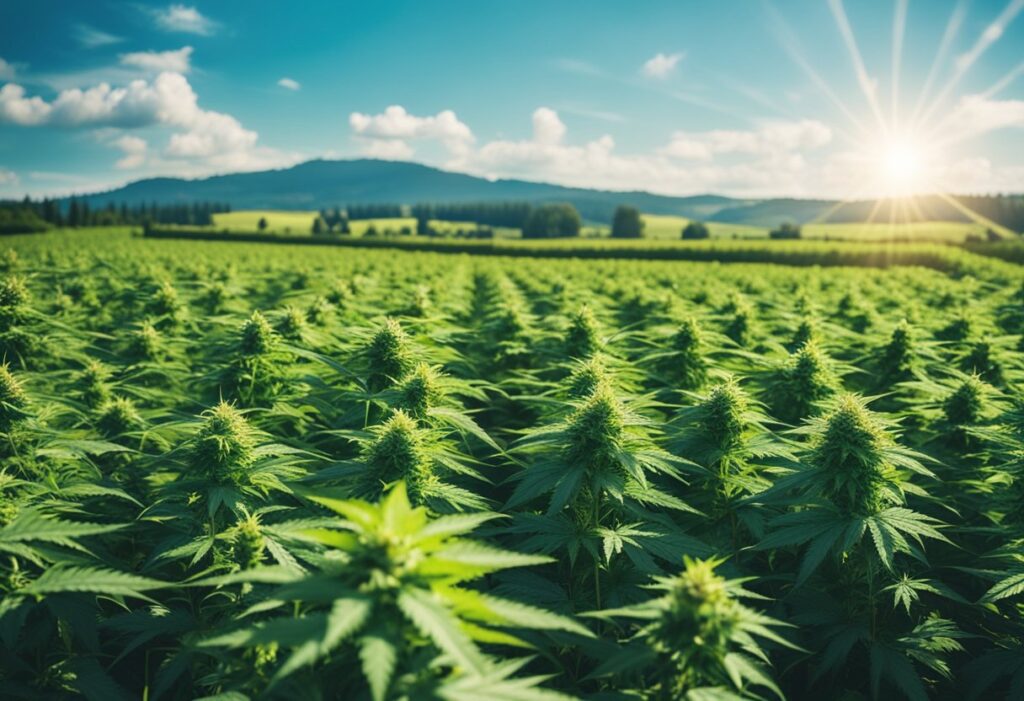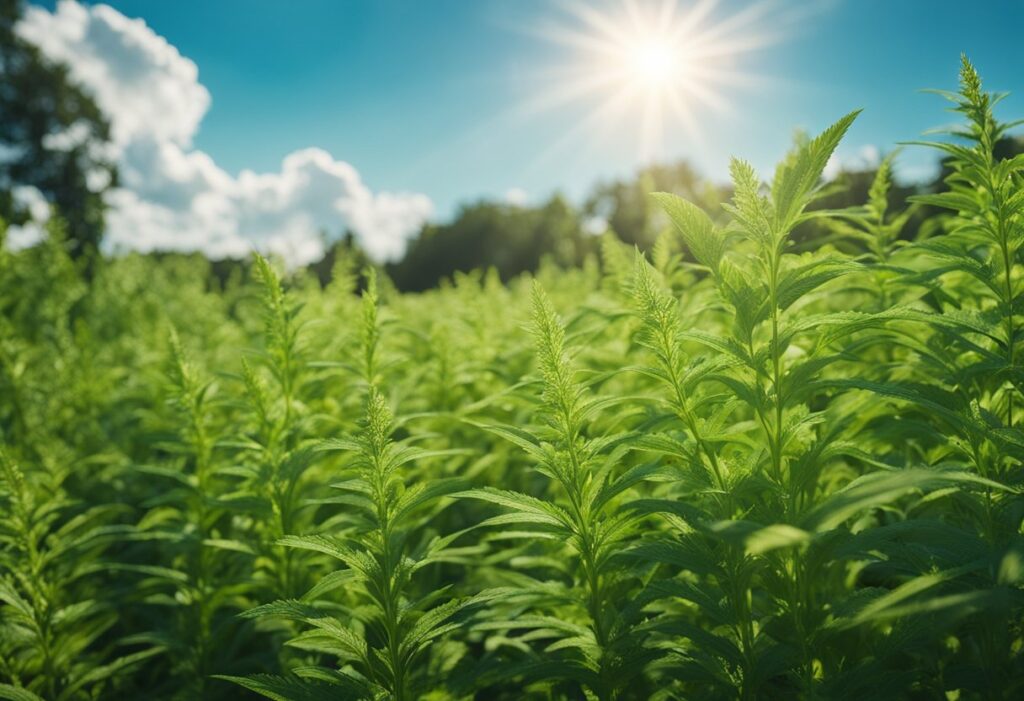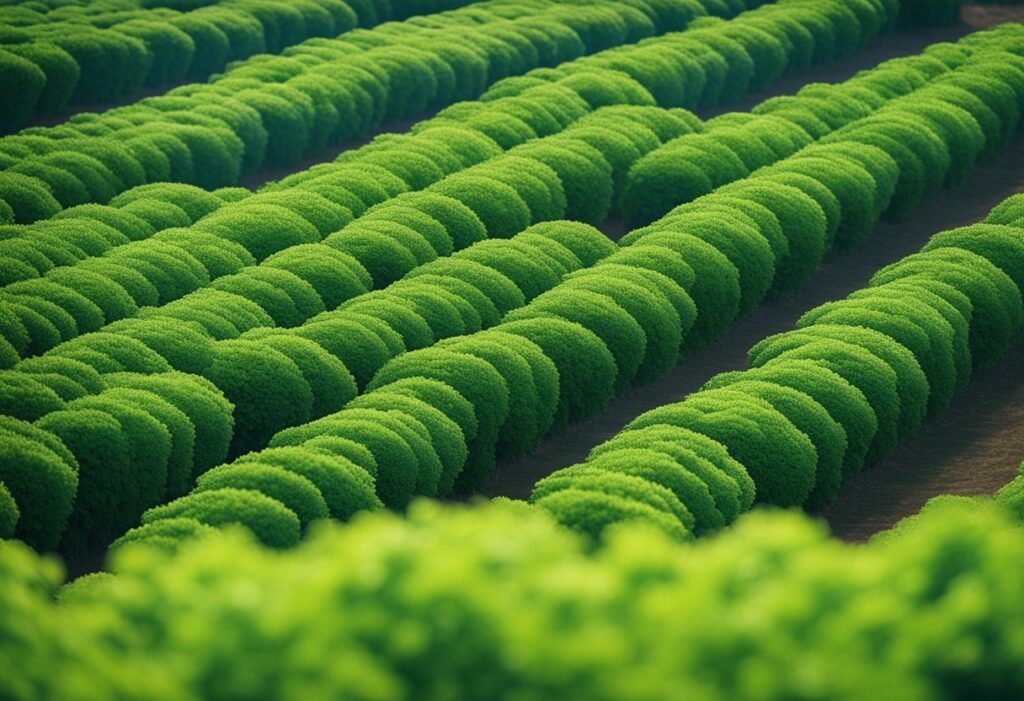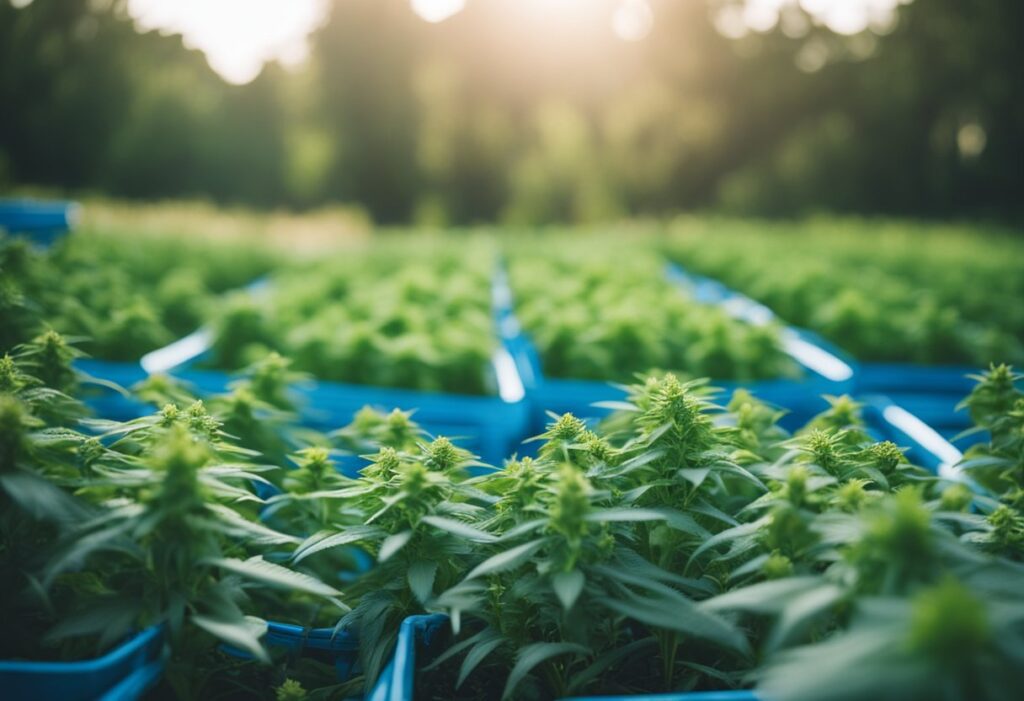
As you explore the popular Blue Dream strain, it’s important to recognize the unique genetic makeup and consistent effects attributed to this sativa-dominant hybrid. Unpacking its heritage, fragrance, and influence on users will reveal why it’s such a sought-after variety.
Blue Dream stems from a crossbreed between two classic strains: Blueberry and Haze. The genetic balance tips in favor of sativa, making Blue Dream a sativa-dominant hybrid. Indica properties come through its Blueberry ancestry, complementing the cerebral stimulation you might anticipate from its Haze lineage.
When it comes to aroma and flavor, Blue Dream is as enticing as it is effective. Your olfactory system will be greeted with a sweet berry scent, a signature of its Blueberry parentage. The flavor profile follows through with a rich tapestry of terpenes like myrcene, pinene, and caryophyllene, delivering a multi-layered sensory experience.
Enjoy the ride when consuming Blue Dream, as it tends to imbue a brilliant mix of euphoria and energy. The uplifting effects are often profoundly associated with the sativa side, setting in motion the perfect scenario for creative endeavors or social gatherings. The gentler indica effects may provide a light relaxation without sedation, making it a well-rounded daytime choice.
Throughout your experience with Blue Dream, you’ll likely appreciate its well-rounded profile, from the high yield it offers to the encompassing effects that cater to both sativa aficionados and those partial to an indica influence.

When you’re looking to maximize the yield and potency of Blue Dream seeds, understanding the specific climate and cultivation conditions is key. You will need to replicate a desirable environment that encourages robust growth whether indoors or outdoors.
The Blue Dream strain flourishes in climates akin to the Mediterranean—with warm temperatures and ample sunlight. In the US, this aligns with the climate of coastal California and regions that mimic these subtropical conditions. For outdoor growing, aim for areas where the temperature ranges between 70-85°F (21-29°C) during the day.
To ensure maximum yield, select an outdoor spot with rich soil and proper nutrients where your Blue Dream plants will receive plenty of sunlight yet be sheltered from harsh conditions.
Growing Blue Dream seeds indoors, you control the environment closely. Use a 600w LED grow light to simulate ample sunlight and maintain a consistent temperature range—preferably between 70-80°F (21-27°C).
For outdoor cultivation, your ability to control the elements is limited. Choose seeds from a trusted source like Farmers Lab Seeds to ensure they are resilient. Outdoor plants will also benefit from added nutrients and constant monitoring to adapt to changing outdoor conditions.

When growing Blue Dream cannabis, implementing advanced cultivation techniques is key to achieving the highest quality and potency. Proper training, nutrient management, and pest control can significantly influence your plant’s growth and THC content.
By adopting Low-Stress Training (LST) methods such as bending and securing branches, you allow for improved light exposure and air circulation throughout the canopy. This not only boosts the growth of secondary branches but also enhances the development of trichomes. Topping, or strategically cutting off the top part of the plant, encourages a bushier growth and can lead to a more robust plant. Prune with caution to maintain the plant’s integrity and to trigger a stress response that boosts THC content.
A finely tuned hydroponic system can accelerate Blue Dream’s growth by delivering nutrients and water directly to roots. This system gives you full control over the pH level and nutrient balance, allowing for precise adjustments to nitrogen, phosphorus, and potassium intake based on the plant’s growth stage. However, whether you choose hydroponics or soil as a medium, monitoring pH levels is crucial to ensure maximum nutrient uptake.
To prevent pests and molds like mildew, maintain moderate humidity levels and ensure good air flow in your growing area. Regular inspections are vital to detect early signs of pests or diseases, enabling prompt treatment. Establish a feeding and watering schedule that avoids overly damp conditions which are conducive to mold development.

To ensure the highest quality Blue Dream, paying close attention to the harvesting, drying, and curing processes is essential. These steps are pivotal for maximizing potency, flavor, and the overall experience.
Your Blue Dream seeds have flowered, and it’s crucial to time your harvest for when THC levels peak. The plants typically require 10 weeks to mature fully after the flowering stage has begun. Observe the buds closely; they’ll become dense and sticky, and the trichomes—which look like tiny glistening crystals—should shift from clear to a milky white color.
Harvesting at the right time ensures your buds are potent and ideal for daytime use, giving that characteristic Blue Dream experience.
Post-harvest, a proper drying and curing process is required for the best results. This influences not just the flavor but also the smoothness of the smoke.
Properly dried and cured buds have enhanced taste, aroma, and a more pronounced effect due to the retained terpenes and cannabinoids such as THC.
Discover the essentials for navigating the successful growth of Blue Dream cannabis in the US climate zones with these pertinent insights.
You’ll find Blue Dream thriving ideally in a Mediterranean-like climate, boasting warm and stable temperatures. Aim to maintain an atmosphere with a consistent temperature range of 70-85 degrees Fahrenheit, especially during critical growth phases.
For Blue Dream, anticipate a flowering period ranging from 9 to 10 weeks. It’s essential to monitor your plants during this time for optimal results.
Typically, Blue Dream reaches full bloom around the 8th or 9th week of its flowering cycle. At this stage, the buds are fully formed, and the plant is nearing harvest readiness.
Blue Dream exhibits a growth pattern more in line with sativa strains—it stretches significantly more than indica-dominant strains. Be prepared for a tall plant with more spacing between the nodes.
Expect dense, sizeable buds from your Blue Dream plants. They are known for their thick resin coat and a high concentration of trichomes, ensuring both quality and quantity in your yield.
We ship and deliver world wide via USPS and various couriers.
We offer a wide range of secure and anonymous online payment options.
We care about you, our customer. Please contact us with any questions or concerns.
Find out more about the benefits of being a loyal and regular customer.
WE ARE EVERY GROWERS ONE STOP SHOP TO ACQUIRE PREMIUM CANNABIS SEEDS FOR SALE IN THE USA, CANADA AND AUSTRALIA

Farmers Lab Seeds 2024, | All Right Reserved
Seeds are sold as novelty items, souvenirs, and collectibles. They contain 0% THC. We encourage our customers to check the legislation in their Country, State, Province, and Municipality prior to purchasing items from our store. We do not provide growing information.
All seeds are sold as hemp, and lab tested under 0.3% THC. This product is not for use by or sale to persons under the age of 21. This product should be used only as directed on the label. It should not be used if you are pregnant or nursing. Consult with a physician before use if you have a serious medical condition or use prescription medications. A Doctor’s advice should be sought before using this and any supplemental dietary product. All trademarks and copyrights are property of their respective owners and are not affiliated with nor do they endorse this product.
These statements have not been evaluated by the FDA. This product is not intended to diagnose, treat, cure or prevent any disease. Individual weight loss results will vary. By using this site, you agree to follow the Privacy Policy and all Terms & Conditions printed on this site. Void Where Prohibited by Law.